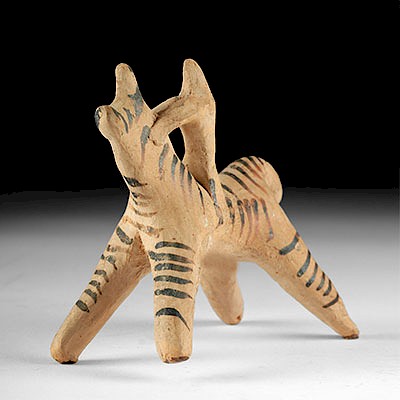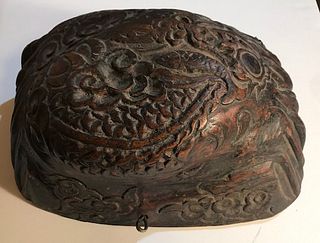Chinese Bronze Age Jade Ritual Knife Blade
Lot 152a
About Seller
Artemis Gallery
686 S Taylor Ave, Ste 106
Louisville, CO 80027
United States
Selling antiquities, ancient and ethnographic art online since 1993, Artemis Gallery specializes in Classical Antiquities (Egyptian, Greek, Roman, Near Eastern), Asian, Pre-Columbian, African / Tribal / Oceanographic art. Our extensive inventory includes pottery, stone, metal, wood, glass and textil...Read more
Categories
Estimate:
$1,400 - $2,100
Absentee vs Live bid
Two ways to bid:
- Leave a max absentee bid and the platform will bid on your behalf up to your maximum bid during the live auction.
- Bid live during the auction and your bids will be submitted real-time to the auctioneer.
Bid Increments
| Price | Bid Increment |
|---|---|
| $0 | $25 |
| $300 | $50 |
| $1,000 | $100 |
| $2,000 | $250 |
| $5,000 | $500 |
| $10,000 | $1,000 |
| $20,000 | $2,500 |
| $50,000 | $5,000 |
| $100,000 | $10,000 |
| $200,000 | $20,000 |
About Auction
By Artemis Gallery
Oct 25, 2018
Set Reminder
2018-10-25 11:00:00
2018-10-25 11:00:00
America/New_York
Bidsquare
Bidsquare : Antiquities from Egypt, Greece, Italy, Asia
https://www.bidsquare.com/auctions/artemis-gallery/antiquities-from-egypt-greece-italy-asia-3538
Featuring Egyptian, Greek, Roman, Etruscan, Near Eastern, plus Asian art from Central and Far East. If you love the classics, this is the sale for you. Artemis Gallery info@artemisgallery.com
Featuring Egyptian, Greek, Roman, Etruscan, Near Eastern, plus Asian art from Central and Far East. If you love the classics, this is the sale for you. Artemis Gallery info@artemisgallery.com
- Lot Description
East Asia, China, early Bronze Age, Erlitou culture (Late Xia Dynasty), ca. 1900 to 1500 BCE. A large, smooth, ritual blade, composed of a matte black-green jade, probably nephrite. The blade is straight-edged on its narrowest side, widening very gently to a curved blade edge. Low on the body, near the straight end, is a wide perforation used for binding the piece to a handle, which would have been at a right angle to the blade. This blade form is probably derived from a bronze ancestor. Size: 3.3" W x 11.6" H (8.4 cm x 29.5 cm); 14.45" H (36.7 cm) on included custom stand.
The smooth, symmetrical edges of this axe speak to the Erlitou stoneworker's skill and persistence in shaping this hard stone. The outline of the stone would be drawn on a slab and then cut out and shaped to create its rounded, sharpened blade edge. The Xia dynasty is by tradition the first dynasty of Chinese history, described in ancient chronicles like the Bamboo Annals. It represents a bridge between the late Neolithic and the first truly urban Chinese civilization in the Shang Dynasty.
Provenance: private New York, New York, USA collection; ex-Tom Murray collection, Mill Valley, California, USA, acquired from Joel Green in the 1990s
All items legal to buy/sell under U.S. Statute covering cultural patrimony Code 2600, CHAPTER 14, and are guaranteed to be as described or your money back.
A Certificate of Authenticity will accompany all winning bids.
We ship worldwide and handle all shipping in-house for your convenience.
#132015Small chips from blade edges, particularly from the flatter side; a few surface scratches commensurate with age.Condition
- Shipping Info
-
All shipping is handled in-house for your convenience. Your invoice from Artemis Gallery will include shipping calculation instructions. If in doubt, please inquire BEFORE bidding for estimated shipping costs for individual items.
-
- Buyer's Premium



 EUR
EUR CAD
CAD AUD
AUD GBP
GBP MXN
MXN HKD
HKD CNY
CNY MYR
MYR SEK
SEK SGD
SGD CHF
CHF THB
THB
















